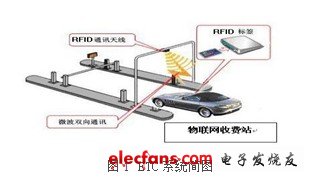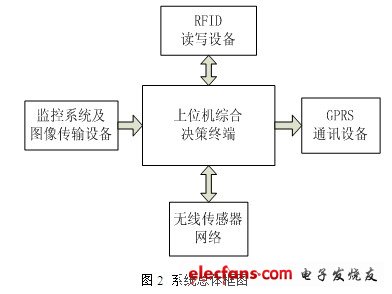introduction
The Internet of Things refers to various devices and technologies, such as radio frequency identification technology, global positioning system, infrared sensor, laser scanner, gas sensor, etc., to collect in real time any objects that need to be monitored, connected, and interacted with Or process, collect all kinds of required information such as sound, light, heat, electricity, mechanics, chemistry, biology, location, etc., and form a huge network with the Internet. Its purpose is to realize the connection between objects and objects, objects and people, all objects and the network, which is convenient for identification, management and control.
This paper designs a regional intelligent vehicle management system based on Internet of Things related technologies, which realizes unmanned payment, transparent and real-time information, can reduce payment time, ease traffic pressure, save manpower and financial resources, and finally achieve intelligent transportation management .
1 Design background
Electronic toll collection system is currently the most advanced toll collection system in the world. It is one of the service functions of the intelligent transportation system. When passing vehicles pass through the crossing without stopping, they can automatically collect tolls. When the vehicle passes through the toll station, it realizes vehicle identification, information writing (entrance) through the on-board equipment and automatically deducts the corresponding funds (export) from the pre-bound IC card or bank account. Using this system, the owner only needs to be on the window Install the induction card and pre-store the fee. There is no need to pay manually when passing the toll booth, and there is no need to stop. The high-speed fee will be automatically deducted from the card. This toll collection system takes less than two seconds per car, and its toll passage capacity is 5 to 10 times that of manual toll passages.

The ETC system is composed of a background system, lane controller, speed sensor device and microwave communication equipment.
This article introduces gprs to provide the charging information notification function to the vehicle owner; and on this basis, combined with other key technologies in the Internet of Things, it is used in the vehicle management system. Most modern vehicle management systems rely on manual registration. In a large parking lot, relevant personnel are required to be monitored and registered at the entrance and in the yard. During the peak period of vehicle entry and exit, there are shortages of personnel, irregular dispatch, and hidden safety hazards. During the trough of quantity, there is also the problem of personnel redundancy, so an unattended intelligent vehicle management system needs to be integrated into the modern logistics management system.
Although the more advanced vehicle management that has been developed so far can achieve unmanned management to a certain extent, there are many problems. First of all, only using radio frequency identification technology can achieve automatic charging, but there is a problem of opaque charging under unsupervised. The system we designed adds voice announcements and telephone notifications to parking charges, which greatly increases the transparency of charges. Secondly, the current system lacks more comprehensive measures for the supervision of parking lot income. Wired monitoring equipment has the disadvantage that the lines are easily damaged, so there is a large blind spot in security. The system we designed uses wireless communication to return image information, and a wireless sensor network node is installed in the parking space, so that the monitoring measures can be specific to each parking space, which greatly enhances the safety factor of the parking area.
Finally, for safety reasons, in the human-computer interaction established by GPRS, functions such as accident broadcasting are added. In this way, even if an accident occurs, the car owner can understand the situation and make the fastest plan.
2 Design principles
2.1 Design ideas
For the purpose of perfecting and more user-friendly electronic non-parking toll collection system, and solving the vehicle management and scheduling of large parking lots and residential parking lots, this design takes the Internet of Things as the background and integrates embedded technology, mobile communication technology, detection and conversion technology, Digital control and other technologies are effectively integrated and applied to the transportation management system.
The system includes the following parts: vehicle radio frequency identification and signal processing part, Video monitoring and image transmission part, internal wireless sensor network part, GPRS communication part, and comprehensive decision-making part of the host computer. Its overall system structure is shown in Figure 2:

ttl to usb cable,ttl cable factory,ttl serial cable,ttl cable driver
Dongguan Bofan technology Co., LTD , https://www.pengliandz.com